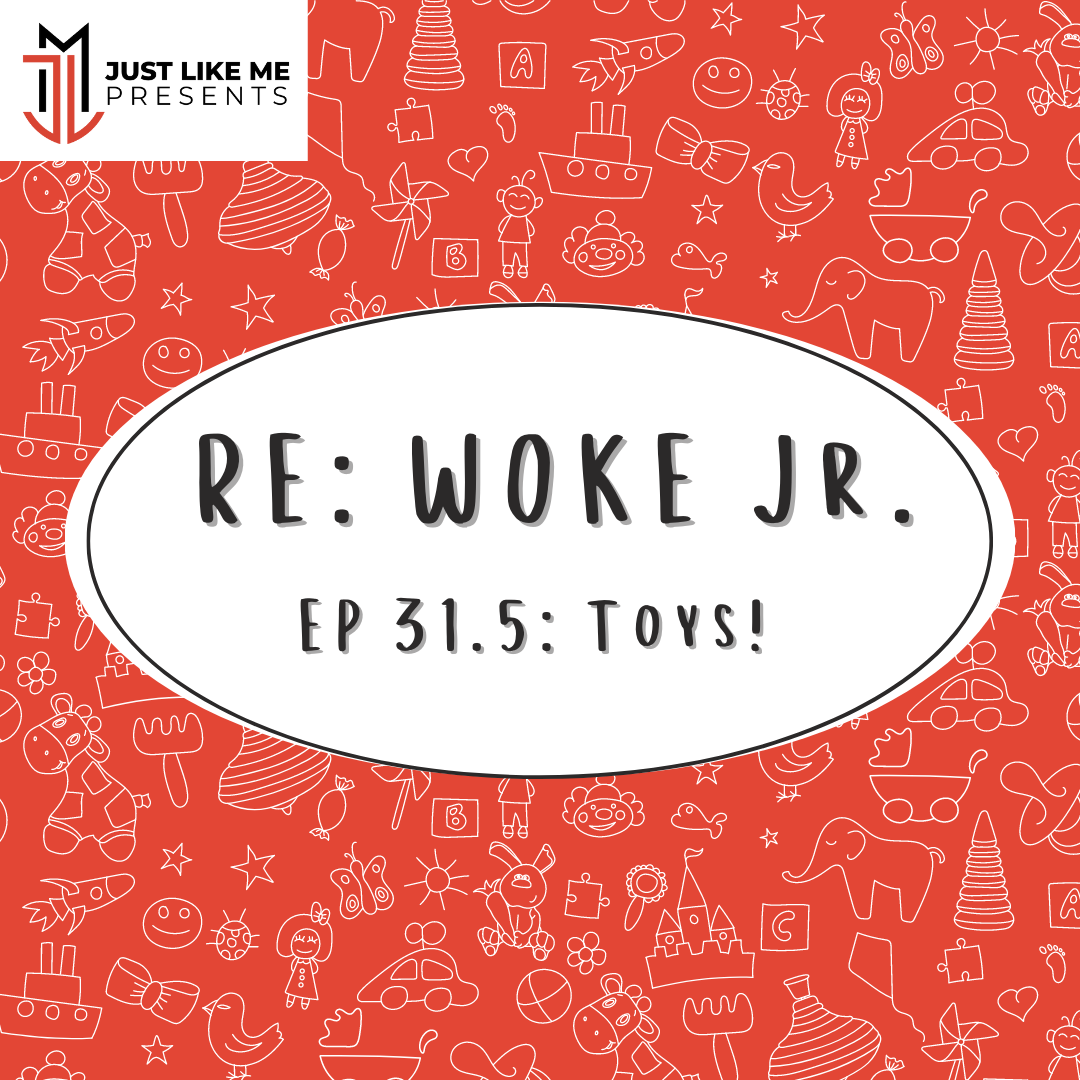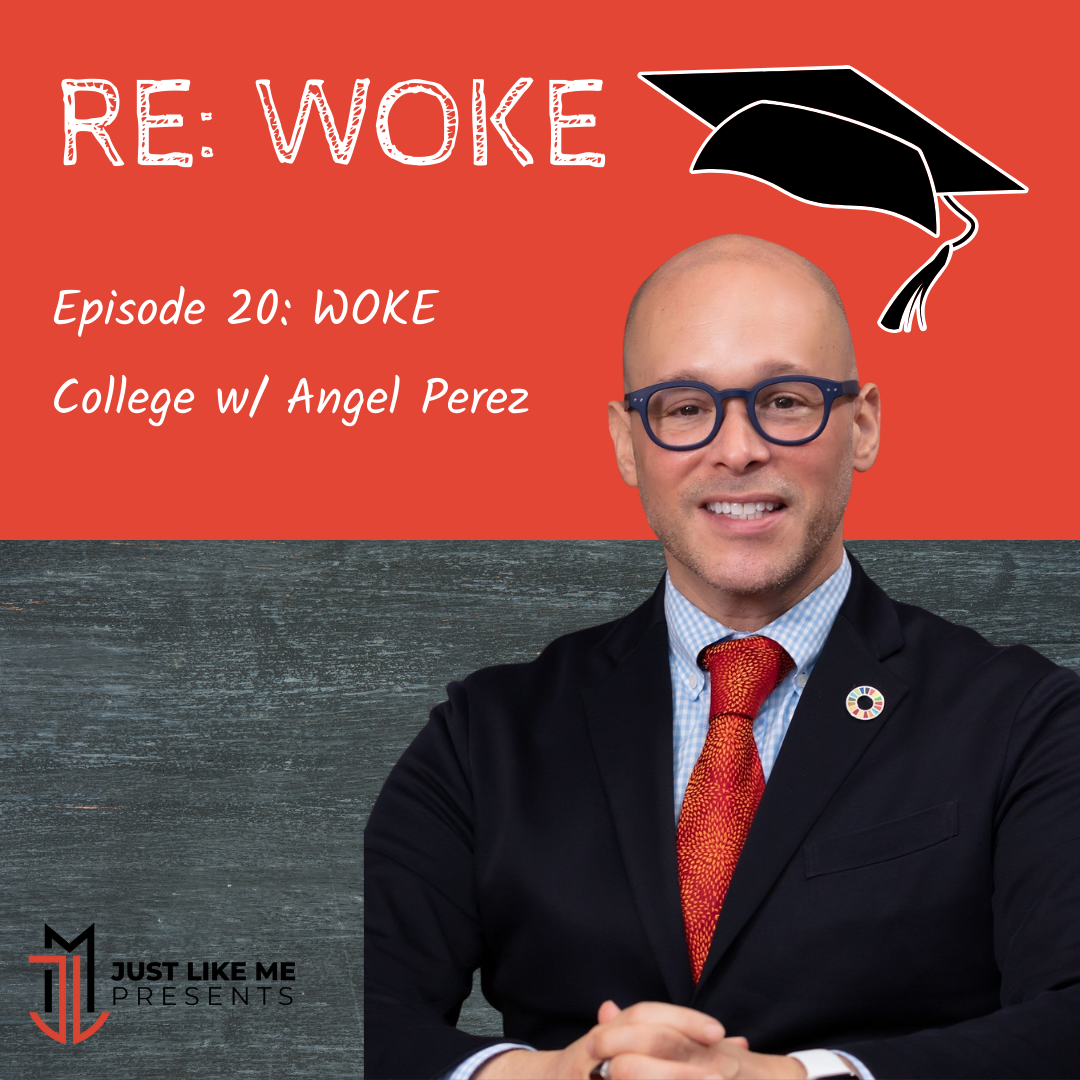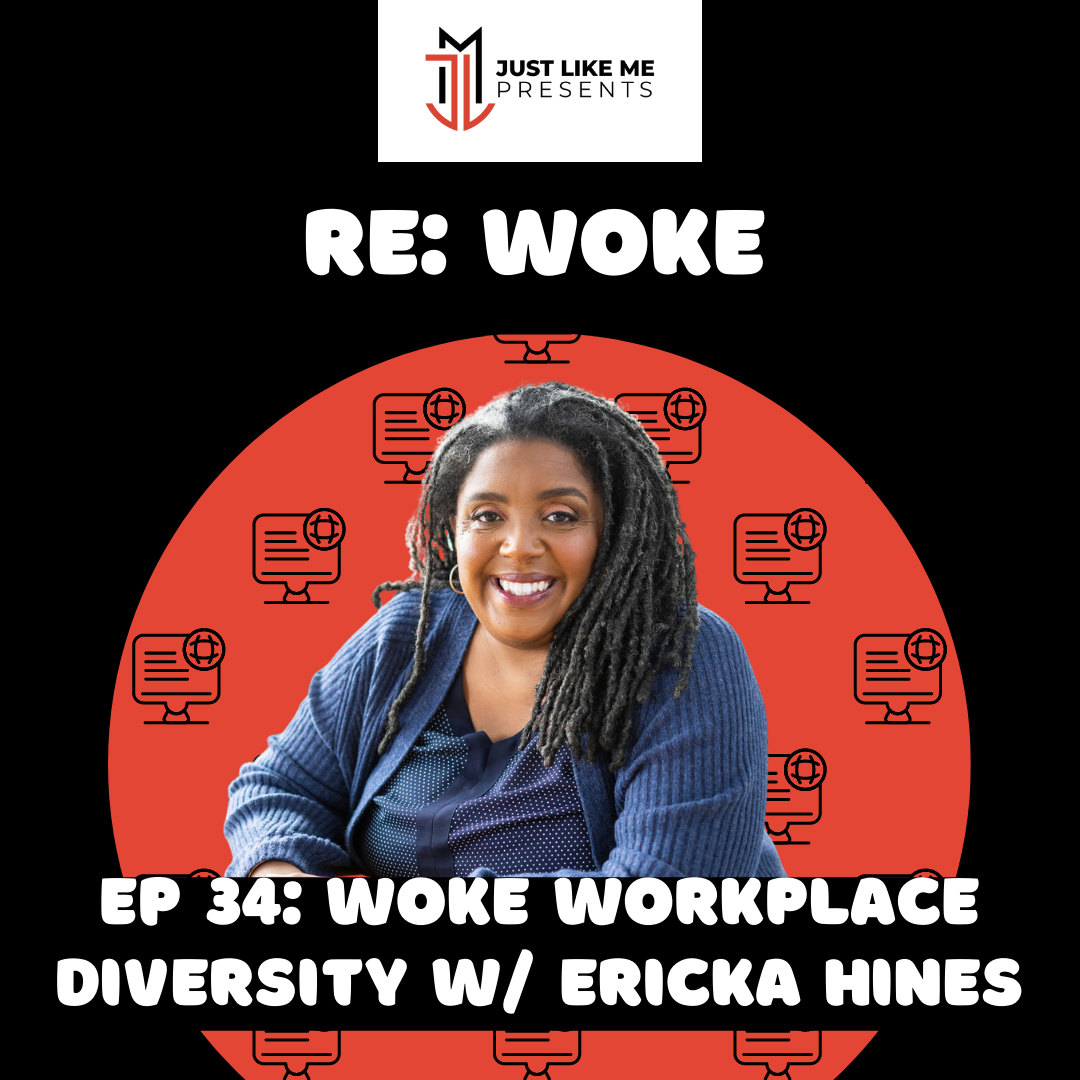Episode Transcript
Speaker 0 00:00:00 Hello, good people and welcome to revoke rewriting our kids education podcast. My name is Michelle person, and we don't want a journey. We are rethinking re-examining and re-educating ourselves and our children. On today's episode, we'll be talking about rope in the classroom. Why is a woke classroom important? What does a classroom look like? Whose job is it to ensure that a classroom is woke? If your child's classroom is not woke, how do you advocate to ensure that it is that's moral a middle school teacher from my home state of Ohio once said success in a diverse classroom comes from a balance of student self-awareness and community acceptance of others. So tell me, are you woke if being broken? The greater society is to be aware of the social and racial injustice in the world, acknowledge that those injustices impact us in everyday life in a million different ways and actively seek ways to counteract and dismantle those injustices then to be woke in the classroom means to be aware of the social and racial injustice that intentionally and unintentionally permeate, traditional education, and impact us in a million different ways, from what we are required to learn to how it is presented to how it is assessed and to actively seek ways to counteract and dismantle those injustices, making the education process more representative inclusive and equitable.
Speaker 0 00:02:04 That's a mouthful. I know it is because I had to write it down and rerecord it three times to make sure I said it right, but I needed to say it just that way, because it's important that we understand what it is and why creating classrooms like that should be the requirements and the norm and not options or exceptions to the rule, our brains process, billions of pieces of information every day, as you experienced the world around you, your brain decides what information needs to be saved. And it does that because it looks at the information that comes in, tries to find the information that is most like the information already there and saves that information that is most similar. It is easier for our brains to learn and store information. When that information is similar to what we already know, that's called having a hook to hang the new on the hook is background knowledge.
Speaker 0 00:03:03 Students bring background knowledge into the classroom every day, including their culture, their language, and their life experiences. When we do their background knowledge as an asset and tap into it, we create an optimal environment for student learning. It is the job of the teacher to present important information and a manner that makes it accessible for all students so that they can be assisted and making meaningful connections. So that that new information can be learned and stored for later use. Unfortunately, research shows that for students of color, that rich background knowledge is often overlooked and underutilized students unable to make meaningful connections to this new information struggle academically. And the negative stereotypes are perpetuated by teachers, administrators, and policymakers who failed to realize that the problems are with the framework, with which the information was presented and not with the student. So that's the why, why woke classrooms are important?
Speaker 0 00:04:12 And here's what one looks like now. Disclaimer, culturally responsive teaching teaching is a mindset about how children learn best. It is not a set list of strategies that will magically make one, a woke teacher. Someone can utilize some of the following strategies in their classrooms and still be terrible, or they can implement none of the strategies and be phenomenal, highly unlikely, but it is possible. This list is simply to give you some look fours or what to watch for in the classroom. Number one, what efforts are being made to get to know your child and build a sense of community. Were you given an interest survey at the beginning of the school year where you and your child don't you throw that in the garbage, fill it out and send it in that survey is the first step in creating a relationship with your child and their teacher.
Speaker 0 00:05:09 A good teacher takes time to read those surveys and takes bits and pieces from each one to make decisions about how to run her classroom, what extension projects they will do, what interest based resources they will pull in, what should they be on the lookout for all of this information comes from that survey that you just threw in the garbage or woke classroom seeks to build relationships with the students. First interest surveys, getting to know you projects, regular class meetings, sharing times, all those things help cultivate a sense of community. That's how they grow that background knowledge. And it's that background knowledge is going to help them and planning their lessons for the year. Number two, have you been invited to the school or classroom to volunteer after building relationships with the students, the school and the teachers should be looking to build relationships with you?
Speaker 0 00:06:05 Are there regularly scheduled family engagement events? Is there a monthly newsletter? Do you read it? Is there a flexible policy about when you can meet with teachers? The most powerful thing that I ever did as a teacher was to get my class roster as early as I could from the school secretary and then spend time making phone calls to each one of my parents before school started before little Johnny forgot to do his homework through a crayon or cussed me out before there was a problem. That's when I made my first phone call. It was an opportunity for them to speak to me when they weren't embarrassed or defensive, they could share tips with me or what worked best for their kid, what they liked, what their child's triggers were and what they would like to see their child be able to do by the end of the year, it was a little time-intensive, but I'm telling you those two to three hours I spent at the beginning of the year saved me so much time over the course of the actual school year.
Speaker 0 00:07:05 And most importantly, it gave me insight on what bridges I needed to build with my students. So they could begin to build strong connections to the academic content. But I was literally about to spend the next nine months trying to teach them tip number three, after you check to make sure your teacher is working to learn more about your child and working to establish a partnership with you. It's time for you to do a little homework on the teacher. Our kids like to talk. They like to create, they like to move any teacher working with black and brown kids that expects them to sit silently in a seat for 20 to 35 minutes and listen to a lecture and then complete a worksheet that teacher is not woke. Most schools have some sort of back to school night before school begins, where you can meet your child's teacher.
Speaker 0 00:07:57 They will have forms for you to fill out surveys for you to fill out, but you make sure you ask them some questions. What teaching framework do they utilize in their classroom? Listen, for terms like project-based learning inquiry learning. This means that the goal is for the learning to happen more organically and then will tend to be driven by an essential question. And the students will have a say in everything from the direction of the learning, the learning goals, activities chosen and how the learning is ultimately assessed Socratic seminar, think pair share classroom carousels and learning walks. Those are all different strategies that teachers understand how children, small children, black and brown children learn will incorporate into their classroom. The teaching strategies that I just named, encouraged discussion, critical thinking and reflection our kids Excel. When they are given these types of opportunities, how was learning, being assessed?
Speaker 0 00:08:58 Is it traditional tests and quizzes with strict percentage and point structures? Or is it portfolios, presentations, and performances with customized rubrics that measures outcomes. You're looking for the ladder. Now I'm going to be honest. It can't be projects and rubrics all the time. Tragically. That is not how the traditional public education system is set up, but there should be a mix. And if you don't see it, you need to ask why those techniques and strategies are not being utilized. Look for number four, ask to see the curriculum. Chances are, they will give you several district purchase textbooks. One for reading, one for math, one for social studies and one for science flipped through them. You're looking to see what the ratio of black and brown imagery is to Caucasian. For me at minimum, it should be 50 50 at best. It should be three to one.
Speaker 0 00:09:55 Meaning a child should see three images that look like them before they see one that doesn't, I'm telling you. Now you probably will not see those ratios and the textbooks that they show you. So your follow-up question is how does the teacher plan on addressing that disparity? Some teachers will show you supplemental novels and units that they have created on their own time to increase access to diverse content. Smile. You got one of the good ones. Other teachers will look at you and say, unfortunately, this is the curriculum of the school has provided. And they'll they empathize. It's a district requirement, yada yada, yada. That is not the response of a woke teacher, but they look for is to pay attention to the school's discipline policies are consequences, primarily punitive, something like three checks equals a detention, three detentions equal a suspension, et cetera, et cetera.
Speaker 0 00:10:54 Look for how many non-negotiable or zero tolerance policies. There are hints. The more there are the less woke they are. You want to see logical consequences. So if your child writes on the wall, they have to spend time making the wall more beautiful because they harm the school community. You want to see personal behavior plans. If your child has consistent issues in the classroom, before they get kicked out of classroom and get sent to the principal's office for their third strike, you want to see community circles. Like we talked about earlier, um, class sharing times where there is opportunities for students to talk and get to know each other and build relationships. And most importantly, you want to see language that talks about repairing harm, restore them justice. Now, if you're thinking to yourself, Michelle, I don't see any of these things at my child's school.
Speaker 0 00:11:47 Then you need to be doing two things. One researching areas, schools, and you can transfer your baby or planning your mode of attack. And I don't mean attack as an, a barrage of F bombs and a long list of demands that you March up to the school and staple them to the front of the school house. I mean planning how you, and hopefully a group of other concerned parents, because trust me, when I say there was always power in numbers, we'll go about addressing these deficits. The first line of defense is always the classroom teacher reach out to her, ask questions, share resources with her about the neighborhood and the culture. Remember you live in this neighborhood every day. She doesn't. The definition of ignorance is the lack of knowledge she truly might not know. But then after you talk, the teacher, you need to examine your role in the school.
Speaker 0 00:12:41 Are you in regular attendance at the evening, family events hosted by the school PTA? Are you an active member in the school PTA? Is there even a PTA to be active in a closed mouth does not get fed and never is that more accurate than in this example, change starts from within. And if you are not an active member in the school community, do not expect a lot of change. Our kids spend one quarter of their lives every week at school. That is a significant amount of time. We don't want all the work. We have done creating a workspace for them at home to be undone. When they walk into the school building pay attention, ask questions, push for policy changes and active participant in the change you want to see in the classroom. We want to hear from you. Did we forget to include something with our workforce?
Speaker 0 00:13:34 Can you share some tips on how your school community has worked to build a work culture or best practices that you observed hop on over to our Facebook page, just like me presents, join our group and let us know, show notes and resources to all the things we talked about on today's show are available on our website. Just like me presents.com. Share this podcast with educators and parents in your community circle and hit the subscribe button. So you never miss an episode. Next week, we will specifically be looking at reading instruction and what tools and strategies work best in a diverse and inclusive classroom. Thanks for listening. And remember if our children can see it, they can achieve it.
Speaker 0 00:14:17 Are you frustrated with traditional education? I was educators. Are you struggling to find inclusive academic content that represents your students? I know the feeling that is why I created just like me presents just like me presents is a multimedia production and development company that stresses the importance of literacy, culturally relevant teaching materials and active learning experiences. Check out our culturally responsive books and supplemental curriculums on our website. Www just like me presents.com and the just like me book. And just like me pick sections. Your child will be amazed at how many books they can choose from where the characters look like them. They've never had math explained the way we do with remember through rhyme and I can guarantee the history we share. And meanwhile, in Africa isn't taught in any traditional public school. Let us help you get the tools you need to rewrite your child's education and set them on a path to success. If you have a child in kindergarten through fifth grade, trust me, you'll want to check us out. I think you're going to love our programs and the long lasting positive impact they will have on your child. Our programs help students develop a strong sense of self, affirm their identities and encourage critical thinking and entrepreneurship skills. Head on over to the website. Now at www just like me, presents.com and help empower your child to become the best version of themselves. And remember if our children can see it, they can achieve it.


